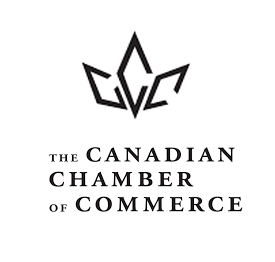
We collect basic website visitor information on this website and store it in cookies. We also utilize Google Analytics to track page view information to assist us in improving our website.
Tariffs and Trade Updates and Information, visit www.chambercheck.ca
|
|
||
|
Technology is no longer a luxury reserved for large corporations and has now become necessity for businesses of all sizes.
For smaller businesses in particular, technology can be a powerful equalizer, helping them compete effectively with larger firms, operate more efficiently, and provide better customer experiences. By embracing the right tools and digital strategies, small businesses can foster growth, improve resilience, and remain agile in an increasingly competitive market.
One of the most immediate benefits of technology is the boost in operational efficiency. Manual tasks like data entry, inventory management, and payroll processing can consume a significant amount of time and are prone to human error, an opinion Rob Matlow, founder, and president of REM Web Solutions, also shares.
The Kitchener-based company, which began in 2001, offers expertise in web design, development, and digital marketing.
Interest in AI growing
“I think any company that’s not reviewing their inefficiencies and trying to improve them is going to end up being in trouble. Most of the time, these inefficiencies are solved by technology,” he says, adding the interest in AI surrounding CRM (Customer Relationship Management) is growing. “People are just opening their eyes to the efficiencies in general that technology can offer and recognizing there are probably a lot of areas to improve.”
Rob says analyzing and reducing the time it takes to complete tasks that multiple employees may undertake, sometimes daily, can make a big difference when it comes to a company becoming more efficient.
“I’m a big fan of templating emails. It’s such an easy thing to do,” he says. “How many emails do you write over and over again?”
Another area is marketing, which can be prohibitively expensive for small businesses if they chose traditional advertising channels such as television or print. Digital marketing offers a much more cost-effective alternative.
“We’ve seen people shift their ad budgets away from anything that they were doing before to the digital side,” says Rob.
Overcoming traditional limitations
Platforms like Google Ads, Facebook Ads, and SEO tools allow businesses to target specific audiences with precision and measure the effectiveness of each campaign.
Even a modest budget can yield significant results if invested wisely. Social media, in particular, provides an accessible platform for storytelling, community building, and customer engagement, all of which are crucial for brand loyalty.
“I would say there’s still a generation of people out there that don’t get it, certainly on the marketing side, and don’t understand how it’s going to help them,” says Rob. “But as soon they step down and bring somebody else in to take over the running of the company, then all of a sudden the floodgates open.”
By leveraging technology thoughtfully and proactively, small businesses can overcome traditional limitations, enhance customer relationships, and build a foundation for long-term success.
In a world that is only becoming more digital, the question is no longer whether to adopt technology, but how soon and how effectively it can be integrated into every aspect of the business.
Q&A with Rob Matlow of REM Web Solutions
1. Is investing in technology a top priority for companies today? • Yes, especially with rising costs and competition.
2. What are signs a company should start investing in technology? • Processes are still manual or time-consuming.
3. Why might a company hesitate to make changes? • Concern about cost or return on investment.
4. What are the first steps to investing in technology? • Start with a review of current tools and workflows.
5. Can a company afford not to leverage technology? • Probably not - falling behind in tech often means falling behind in business. |
||
|
||
|
||
|
||

|
|
Brian Rodnick 251 July 2, 2025 |

|
|
Greg Durocher 41 July 28, 2023 |

|
|
Canadian Chamber of Commerce 24 January 29, 2021 |

|
|
Cambridge Chamber 2 March 27, 2020 |